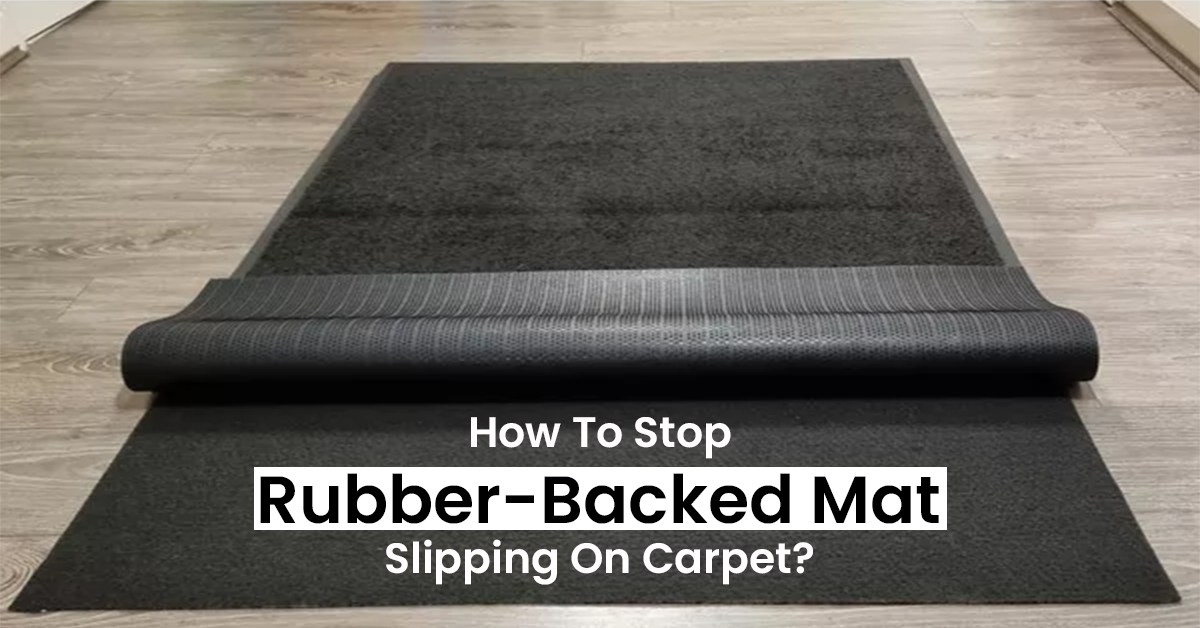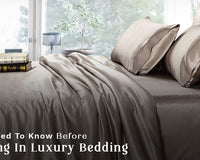Rubber-backed mats can be a fantastic addition to your home, providing comfort, safety, and style. However, one common issue many people face is the annoying slipping of these mats on carpeted surfaces. Not only is it frustrating to constantly readjust the mat, but it can also pose a safety hazard. This guide will delve into the reasons behind this slippage, how to identify it, the potential damage it can cause to your carpet, and, most importantly, effective solutions to prevent it.
Why Do Rubber-Backed Mats Slip On Carpet?
- Lack of friction: Rubber-backed mats slip on the carpet because there's not enough friction between the rubber backing and the carpet fibres.
- Pressure: When pressure is applied, such as walking or shifting weight, the mat easily slides due to the insufficient grip on the carpet.
- Carpet pile height: The carpet pile height can also contribute to slippage, affecting the contact between the mat and the carpet.
- Mat weight: Lighter mats are more prone to slipping than heavier ones, as they have less weight to hold in place.
- Type of rubber backing: The type of rubber backing used on the mat can influence its ability to grip the carpet surface.
These factors combined contribute to the common issue of rubber-backed mats slipping on carpeted surfaces.
How To Identify Mat Slippage?
Identifying mat slippage is crucial to effectively address the issue and prevent any potential damage to your carpet. Here are some key indicators to help you identify if your rubber-backed mat is slipping on the carpet:
- Constant Adjustment: If you frequently have to readjust the position of your mat, it's a clear sign that it's slipping on the carpet. Even minor movements can indicate slippage and should be addressed.
- Visible Shifting: When pressure is applied to the mat, such as when walking or moving furniture, observe if the mat shifts out of place. This shifting may be subtle or more noticeable, depending on the severity of the slippage.
- Wrinkles or Folds: Look closely at the carpet underneath the mat. If you notice wrinkles, folds, or creases in the carpet where the mat has shifted, it strongly indicates slippage. These wrinkles can form as the mat moves across the carpet surface.
- Uneven Wear Patterns: Inspect the carpet beneath the mat for any signs of uneven wear patterns. The constant movement of the mat can wear down the carpet fibres in specific areas, leading to bald spots or noticeable differences in texture.
- Visible Damage: In some cases, slippage can cause visible damage to both the mat and the carpet. Look for signs of fraying or tearing along the edges of the mat or in the surrounding carpet fibres. This damage can worsen over time if addressed.
Attention to these signs lets you quickly identify if your rubber-backed mat is slipping on the carpet. Once you've confirmed the presence of slippage, you can take appropriate steps to prevent it and maintain a safe and secure environment in your home.
Can Slippage Cause Damage To Carpet?

Yes, mat slippage can cause damage to your carpet over time. When PVC rubber mats slip on carpeted surfaces, the constant movement can wear down the carpet fibres. This friction between the mat and the carpet can create bald spots or uneven wear patterns. Additionally, if the mat shifts suddenly due to slippage, it can pull on the carpet fibres, leading to fraying or tearing.
The repeated movement of the mat can weaken the carpet's structure, especially in high-traffic areas where slippage is more common. Over time, this can result in visible damage to the carpet, affecting its appearance and longevity.
Furthermore, slippage can also cause safety hazards. A shifting mat can create tripping hazards, especially in areas where people walk frequently. This can pose a risk, particularly for young children, older people, or anyone with mobility issues.
To prevent damage to your carpet caused by slippage, addressing the issue promptly and implementing effective solutions is essential. Using methods such as double-sided carpet tape, non-slip round rug pads, Velcro strips, heavy objects, rubber grippers, and maintaining a clean surface can help secure the mat in place and minimise the risk of damage to your carpet.
Regular maintenance of both the mat and the carpet is also crucial. Inspecting and cleaning the mat and carpet regularly, at least once a month or more frequently if needed, can help remove any dirt, dust, or debris that may contribute to slippage. Keeping the surfaces clean ensures maximum grip and reduces the likelihood of the mat shifting.
In short, slippage of rubber mats on carpeted surfaces can indeed cause damage to the carpet over time. The friction generated by the movement of the mat can wear down the carpet fibres, resulting in bald spots, uneven wear patterns, fraying, or tearing. It's important to address slippage issues promptly and implement effective prevention methods and regular maintenance routines to prevent damage and ensure safety. Doing so lets you enjoy the benefits of your mats without worrying about the negative consequences of slippage on your carpet.
How To Stop Rubber-Backed Mat Slipping On Carpet?
Double-Sided Carpet Tape
Double-sided carpet tape is a quick and easy solution to prevent rubber-backed mats from slipping on the carpet. Simply apply the tape to the edges or underside of the mat and press firmly onto the carpet. The strong adhesive will keep the mat securely in place.
Non-Slip Rug Pad

A non-slip rug pad is another effective option for preventing mat slippage. These pads are made of grippy materials like rubber or latex and provide an extra traction layer between the mat and carpet. Cut the pad to size and place it underneath the mat for stability.
Velcro Strips

Velcro strips are a versatile solution for securing rubber-backed mats for carpets. Attach one side of the Velcro to the underside of the mat and the other side to the carpet. The hook-and-loop fastening system creates a strong bond that prevents slipping without damaging the carpet.
Heavy Objects

Placing heavy objects on the mat can help weigh them down and prevent them from slipping. Consider using decorative weights like ceramic vases or stone sculptures that complement your décor. Ensure the objects are evenly distributed to avoid creating pressure points on the carpet.
Rubber Grippers

Rubber grippers, or rug gripper pads, are designed to anchor mats and rugs to carpeted surfaces. These pads feature a textured rubber surface that grips the carpet fibres, preventing slippage. Place the grippers underneath the corners or edges of the mat for maximum effectiveness.
Clean Surface
Keeping the surface beneath the mat clean can also help prevent slippage. Dirt, dust, and debris can reduce the friction between the mat and the carpet, making it more prone to slipping. Vacuum the area regularly and spot-clean any spills or stains to maintain traction.
Conclusion
Rubber-backed mats can be a practical and stylish addition to your home, but dealing with slippage issues can be frustrating. By understanding the causes of slippage and implementing effective prevention methods such as double-sided carpet tape, non-slip rug pads, Velcro strips, heavy objects, rubber grippers, and maintaining a clean surface, you can enjoy your mats without worrying about constant readjustment.
FAQs
What should I do if my mat still slips after trying various methods?
If your mat continues to slip despite trying different methods, consider combining multiple solutions for added security. For example, you could use double-sided carpet tape and a non-slip rug pad for extra traction.
Can I use any type of rug gripper on my carpet?
While most rug grippers are designed to be compatible with a wide range of carpet types, it's always best to check the manufacturer's recommendations before purchasing. Some grippers may be better suited for low-pile carpets, while others are more suitable for high-pile or plush carpets.
Are there any long-term solutions for preventing slipping?
Investing in a high-quality rubber-backed mat or rug specifically designed for use on carpet can provide a long-term solution to prevent slipping. These mats often feature enhanced grip and durability, reducing the need for additional measures.
How often should I inspect and clean my mat to maintain its grip?
Regular inspection and cleaning are essential for maintaining the grip of your mat. Check for any signs of wear or damage, such as fraying edges or worn-out backing, and clean the surface underneath the mat to remove any dirt or debris that could affect traction.


